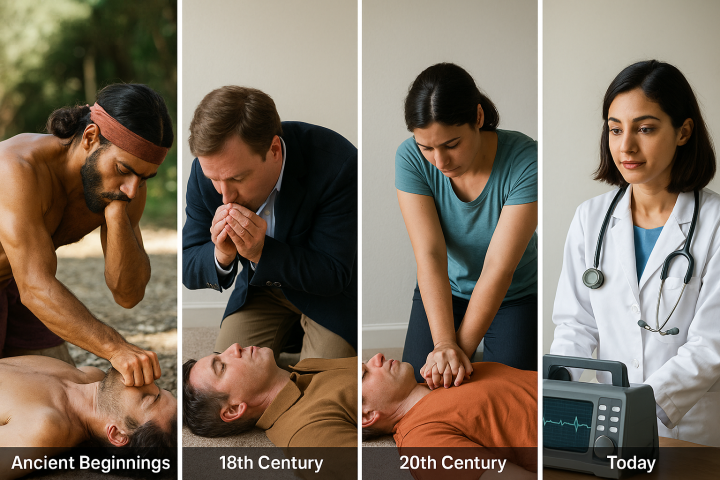Cardiopulmonary resuscitation (CPR) has become a critical skill for saving lives during cardiac arrest, but it hasn’t always been the modern, standardized process we know today. Let’s take a quick journey through the evolution of CPR—from its rudimentary origins to the advanced, team-based approach we now call Advanced Cardiovascular Life Support (ACLS).
1. Ancient Beginnings
Long before the development of modern medicine, ancient cultures had their own methods of reviving people. Historical accounts suggest practices like blowing air into a victim’s mouth or nostrils and applying chest pressure were used in early resuscitation attempts, though these were not systematic or based on scientific evidence.
2. 18th Century: Mouth-to-Mouth Resuscitation Emerges
In the 1740s, the Dutch Humane Society promoted mouth-to-mouth resuscitation for drowning victims. Around the same time, the idea of providing rescue breaths became more recognized, particularly in water rescue efforts.
3. 20th Century: Birth of Modern CPR
The 1950s and 60s saw some of the most important developments:
- 1956: Mouth-to-mouth resuscitation was formally introduced as a viable lifesaving technique.
- 1960: Drs. Kouwenhoven, Jude, and Knickerbocker combined mouth-to-mouth breathing with chest compressions, giving rise to modern CPR.
- 1963: The American Heart Association (AHA) began formally promoting CPR to the public and healthcare providers.
4. The Development of ACLS
As cardiac arrest treatment advanced, the need for more comprehensive protocols became clear.
- 1970s: ACLS was developed, combining CPR with defibrillation, airway management, and pharmacology.
- 1980s–1990s: AHA formalized ACLS certification, creating structured training programs for healthcare providers.
5. Technological Advances & Team-Based Care
With the turn of the 21st century, CPR and ACLS have continued to evolve:
- Emphasis on early defibrillation with AEDs.
- High-quality compressions and minimizing interruptions.
- Team dynamics and post-resuscitation care as standard parts of ACLS.
- Integration of feedback devices and simulation-based training.
6. Today: Evidence-Based, Lifesaving Science
Now, CPR and ACLS are based on ongoing research. Guidelines are updated every five years by the AHA and other international bodies. The focus is on simplicity, efficiency, and improved outcomes—from the moment a collapse is witnessed to advanced interventions in the hospital.
Final Thoughts
From the first breaths of hope blown centuries ago to today’s coordinated ACLS response, CPR has come a long way. Learning its history isn’t just about the past—it’s a reminder of how far we’ve come in our ability to save lives and how important ongoing training and education remain.


